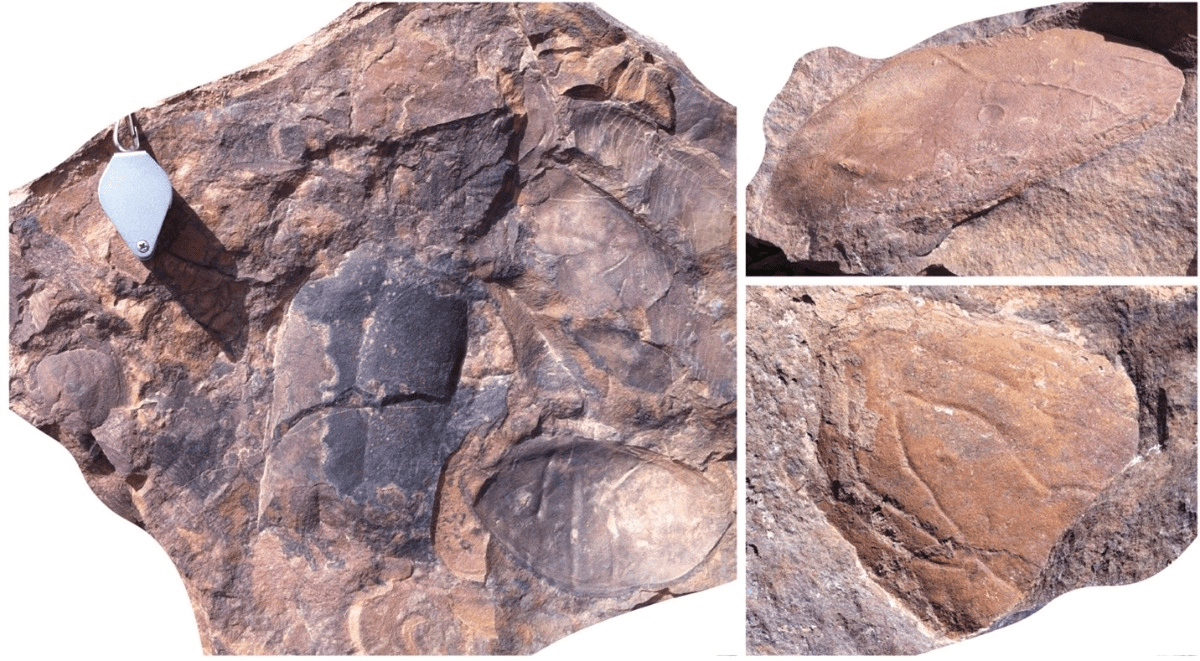A newly explored site in the Fezouata Shale reveals creatures similar to those found in nearby sites, but even larger, showing how big the ancestors of modern arthropods once grew. Today, arthropods, which include spiders, barnacles, and millipedes, are known mostly for their abundance and extreme diversity, but few are very large. Once, however, they reached 2 meters (6.6 feet) long, in case your nightmares need new fuel.
Taichoute, located near Morocco’s Algerian border, preserves a rich sample of animals from the upper Floian Stage, 470 million years ago. Few sites of similar age have been found, and the conditions in which the shale formed at Taichoute preserved the fossils in three dimensions, rather than crushing them flat. A paper in Scientific Reports describes some of the early finds at the site, and how they differ from other deposits in the same geological formation.
The Fezouata Shale was recently selected as one of the 100 most important geological sites in the world for the rare glimpses it has offered palaeontologists into the early Ordovician Period. It was laid down when the staggering diversity of species that appeared in the Cambrian Period started to become more recognizable as the ancestors of those we know today. Nevertheless, Taichoute, located 80 kilometers (50 miles) north-east of previously studied deposits in the shale, offers something significantly different.
“Everything is new about this locality – its sedimentology, paleontology, and even the preservation of fossils – further highlighting the importance of the Fezouata Biota in completing our understanding of past life on Earth,” said Dr Farid Saleh of the University of Lausanne in a statement. It suggests previous discoveries of arthropods of similar size were not isolated examples.
Impressive as the fossils at Taichoute are, many are in fragments like these nektonic arthropods. Image Credit: Bertrand Lefebvre
Almost half the specimens found at Taichoute are euarthropods, “true” arthropods with jointed limbs and hardened but flexible exoskeletons. This is a much higher proportion than at the three previous Fezouata sites. Next most common were the Graptolites, a group of extinct filter-feeders.
Dr Xiaoya Ma of the University of Exeter added there is a lot of work to be done to describe the specimens found at Taichoute, and some are likely to be revealed as species known from other Fezouata sites. “Nevertheless, their large size and free-swimming lifestyle suggest they played a unique role in these ecosystems,” Ma said. Moreover, trilobite species that have not been found elsewhere in Fezouata deposits have already been found at Taichoute.
The shale captured animals living in what was then a shallow sea close to the South Pole. The Taichoute fossils were buried in sediments a few million years younger than previously explored sites, and under somewhat different conditions.
“Carcasses were transported to a relatively deep marine environment by underwater landslides, which contrasts with previous discoveries of carcass preservation in shallower settings, which were buried in place by storm deposits,” said the University of Lausanne’s Dr Romain Vaucher.
Today, Fezouata is about as stark a desert as anywhere on Earth, but in the Ordovician it was at polar latitudes and had a thriving ecosystem off the African coast. Image Credit: Bertrand Lefebvre
Whether the Taichoute specimens are larger than those elsewhere because of the time interval, or because they lived in deeper waters is not known.
The site has also revealed something about the relationship between specimens, with brachiopods attached to fragments of arthropods, indicating that when the giants of the era died, they became a food source to the bottom dwellers of the era. The food web may have resembled that seen when whale falls create a burst of life on the sea floor today.
The paper is Open Access in Scientific Reports.
Source Link: Two Meter Arthropods Dominated The Seas 470 Million Years Ago
